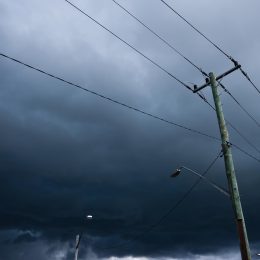
We’re all connected to the electric grid, so ensuring the right amount of electricity for all involves a complex process of forecasting energy demand, planning for capacity and securing enough supply to meet Americans’ needs.
POWERFUL SOURCES
First, electricity must be generated at a power plant using either traditional sources, such as coal, natural gas or nuclear energy, or from renewable sources, such as solar, wind or hydropower. At Orange County REMC, we work closely with Hoosier Energy, our local wholesale power partner, to secure enough electricity for our communities, using a diverse mix of energy sources to generate the power we deliver to your home or business. By maintaining a diverse energy mix — coal, natural gas and renewables — Orange County REMC has options to ensure reliable power at a competitive cost.
On a larger scale, across the country, electricity supply and demand are managed through a market that includes long-term planning agreements, where electricity is bought and sold just like other common goods and services. Because Orange County REMC works with our wholesale power partner, which is also a cooperative, we are able to pool resources and expertise to deliver affordable power to our local communities.
Electricity supply changes throughout the day because demand fluctuates based on consumers’ needs. For example, Orange County REMC knows that we need to ensure more electricity in the mornings when you’re starting your day, and in the evenings when you’re cooking dinner, running appliances and watching TV. Demand also increases when weather patterns change, and hit high or low temperatures.
MANAGING SUPPLY AND DEMAND ACROSS THE GRID
Across the country, other electric utilities are managing the same task of balancing supply and demand, which is why we have a larger network of key players in place to ensure enough power is delivered across the grid. In most cases, the amount of electricity generated and how much is sent to specific areas are coordinated and monitored by regional transmission organizations (RTOs) and independent system operators (ISOs). In other areas, individual electric utilities perform these tasks. RTOs, ISOs and electric utilities act as air traffic controllers for the electric grid. They forecast when you, your neighbors and communities across a large region will need more power. These organizations take measured steps to ensure there’s enough supply to meet demand.
LOOKING AHEAD
As the energy sector undergoes rapid change, it’s important for all consumers to understand the basics of electricity supply and demand. Electricity use in the U.S. is expected to rise to record highs this year and next, with the demand for electricity expected to at least double by 2050. At the same time, energy policies are pushing the early retirement of always-available generation sources, which will undoubtedly compromise reliable electricity.
Your co-op remains committed to providing affordable, reliable energy to the members we serve. That’s why we are preparing now for increased demand and other challenges that could compromise our local electric supply. Managing the balancing act of electricity supply and demand is a complex job, which is why we have a network of utilities, power plant operators and energy traffic managers in place to direct the electricity we need and keep the electric grid balanced.



